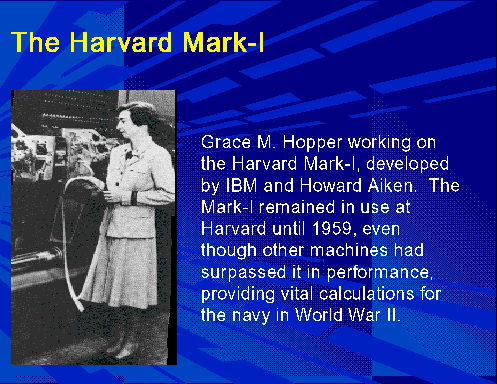By the late 1930s punched-card machine techniques had become so well
established and reliable that Howard Aiken, in collaboration with engineers
at IBM, undertook construction of a large automatic digital computer based
on standard IBM electromechanical parts. Aiken's machine, called the
Harvard Mark I, handled 23-decimal-place numbers (words) and could perform
all four arithmetic operations; moreover, it had special built-in programs,
or subroutines, to handle logarithms and trigonometric functions. The Mark
I was originally controlled from pre-punched paper tape without provision
for reversal, so that automatic "transfer of control" instructions could
not be programmed. Output was by card punch and electric typewriter.
Although the Mark I used IBM rotating counter wheels as key components in
addition to electromagnetic relays, the machine was classified as a relay
computer. It was slow, requiring 3 to 5 seconds for a multiplication, but
it was fully automatic and could complete long computations without human
intervention. The Harvard Mark I was the first of a series of computers
designed and built under Aiken's direction.
Computers: From the Past to the Present
Harvard Mark I:
Last modified July 30, 2006
©1994-2006 by Michelle A. Hoyle
